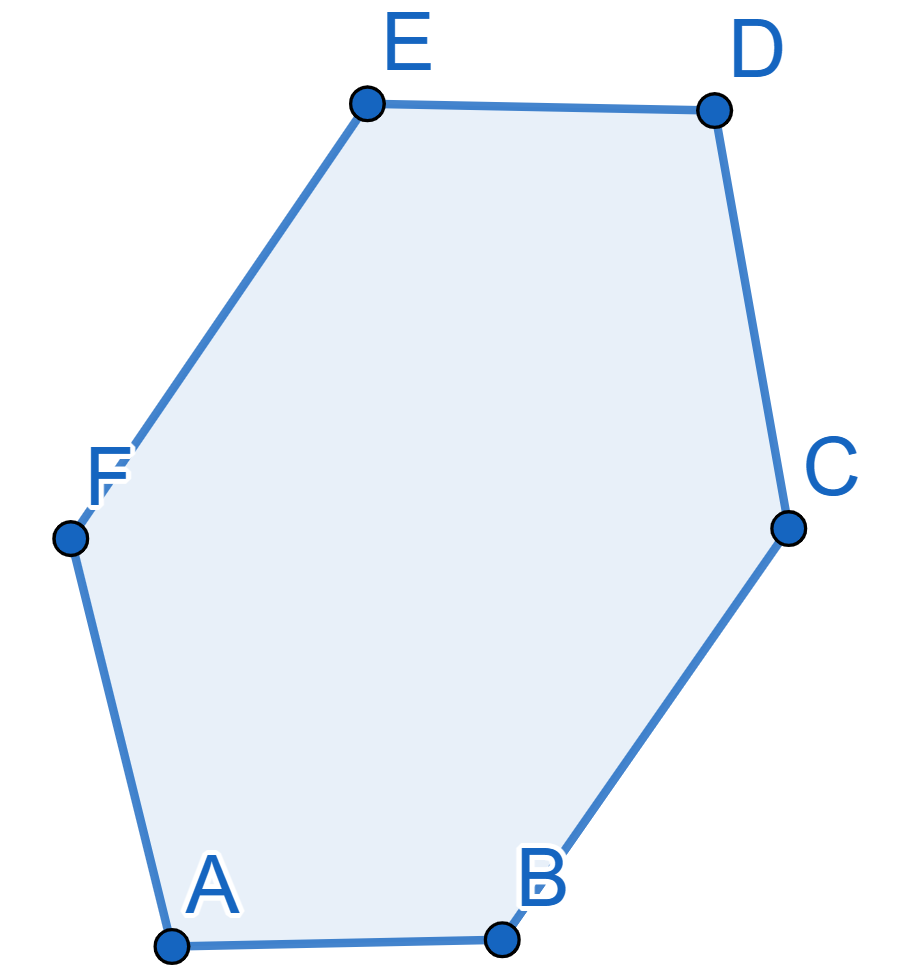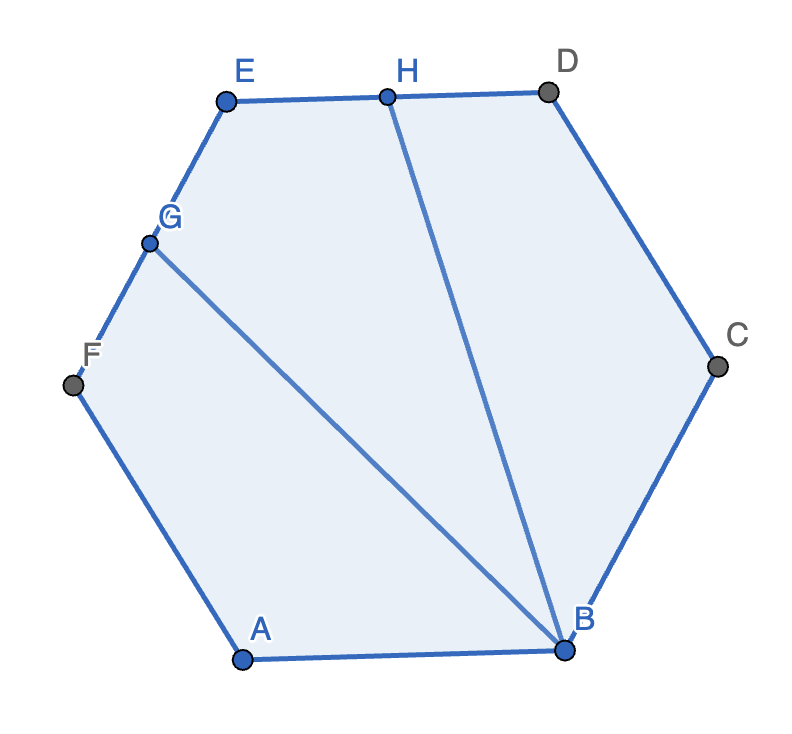Problems
Draw the plane tiling using convex hexagons with parallel and equal opposite sides.

Draw how to tile the whole plane with figures, consisting of squares \(1\times 1\), \(2\times 2\), \(3\times 3\), \(4\times 4\), \(5\times 5\), and \(6\times 6\), where each square appears an equal number of times in the design of the figure. Can you think of two essentially different ways to do this?
Find a non-regular octagon which you can use to tile the whole plane and show how to do that.
Observe that \(14\) isn’t a square
number but \(144=12^2\) and \(1444=38^2\) are both square numbers. Let
\(k_1^2=\overline{a_n...a_1a_0}\) the
decimal representation of a square number.
Is it possible that \(\overline{a_n...a_1a_0a_0}\) and \(\overline{a_n...a_1a_0a_0a_0}\) are also
both square numbers?
Let \(ABCDEF\) be a regular hexagon. Points \(G\) and \(H\) lie on \(EF\) and \(DE\) respectively such that \(|EG|=|EH|\). Furthermore, the area of quadrilateral \(ABGF\) is equal to the area of quadrilateral \(BGEH\), which are both equal to the area of \(BCDH\). What’s the ratio \(\frac{|EG|}{|EF|}\)?

Jane’s birthday cake is square-shaped and has side length 25 cm. Suppose she makes 4 horizontal cuts perpendicular to the vertical edges of the cake and 4 vertical cuts perpendicular to the horizontal edges of the cake. Show that at least one of the pieces has an area of at most 25 cm\(^2\).
You may have seen the pigeonhole principle before, sometimes called
Dirichlet’s box principle. It says that if you have more pigeons than
pigeonholes, and you put all of the pigeons into some pigeonhole, then
there exists at least one pigeonhole with at least two pigeons. While it
sounds quite simple, it’s a powerful technique. The difficult thing is
often choosing the appropriate pigeons and pigeonholes.
It has multiple applications in various situations.
Today we will see how to use it in geometric problems.
Show that given any nine points on a sphere, there is a closed hemisphere that contains six of them. A closed hemiphere is one that contains the equator with respect to the division.
I’m thinking of a positive number less than \(100\). This number has remainder \(1\) when divided by \(3\), it has remainder \(2\) when divided by \(4\), and finally, it leaves remainder \(3\) when divided by \(5\). What number am I thinking of?
I’m thinking of two prime numbers. The first prime number squared is thirty-six more than the second prime number. What’s the second prime number?